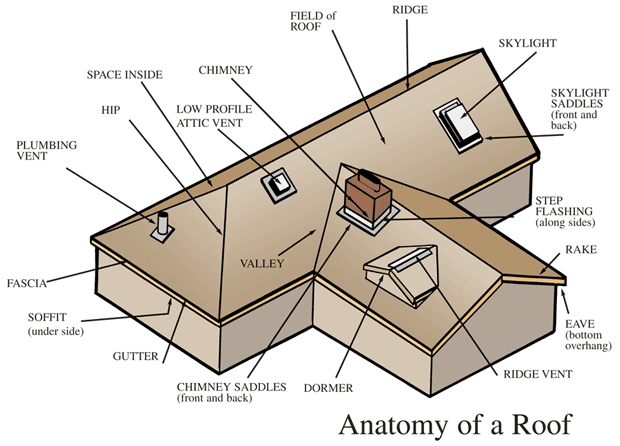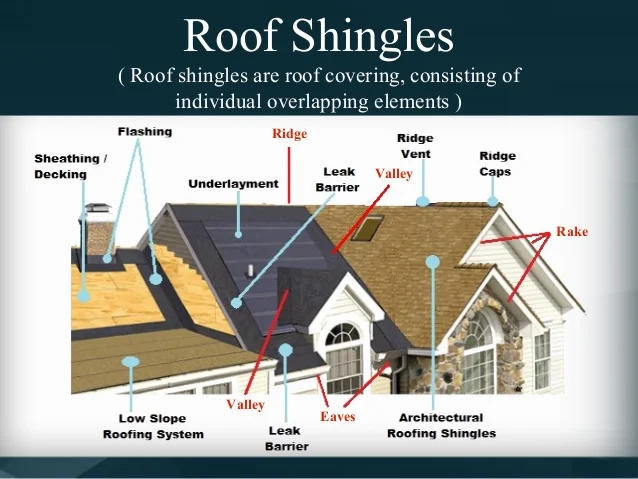Every industry has their lingo and it can feel like the professional is speaking another language when they throw out terms that you have never heard before! When you speak with one of our guys about getting a new roof, here is a list of the most common terms roofers use and what they mean.
Roof Construction
- ROOF DECK – the base of your roof, typically plywood or OSB (oriented-strand board); the material used is called SHEATHING (shown in the second picture below)
- EAVES – the horizontal edge of the roof that projects out from the house; where your intake vents are located
- RAKE – the vertically angled edge of the roof that projects out from the house
- SOFFIT – the horizontal underside of the eave and rake edges
- FASCIA – the edge (trim) around the perimeter of your house, just under the roof
- VALLEY – the v-shaped dip where 2 slopes of your roof intersect
- RIDGE – the horizontal peak of your roof
- HIP – vertical peak where two angles of your roof meet
- DORMER – area protruding out from the roof

Roofing System Components
- UNDERLAYMENT – product that covers the roof deck and provides a watertight barrier between the roof deck and the shingles
- FLASHING – metal pieces that waterproof all intersections; most commonly around your chimney, in a valley, around vents
- RIDGE CAP – a special single that is fit over the ridge or hip
- VENT – an opening that allows air, heat, and vapor to escape; includes attic and plumbing vents
- RIDGE VENT – the vent at the highest point of the roof
- PIPE BOOT – rubber or aluminum flashing around plumbing vents (plumbing vent shown in picture above)
- INTAKE VENT – opening that allows air in to maintain proper air flow and temperature

Roofing Terms
- SQUARE – area of 100 square feet
- BUNDLE – package of shingles
- PITCH – fraction expressing the angle of the roof’s SLOPE (steepness of roof as a ratio)
- TEAR OFF – remove existing roofing material
Your roof includes so much more than shingles! When everything works together, your complete roof system will protect your home for years to come.
